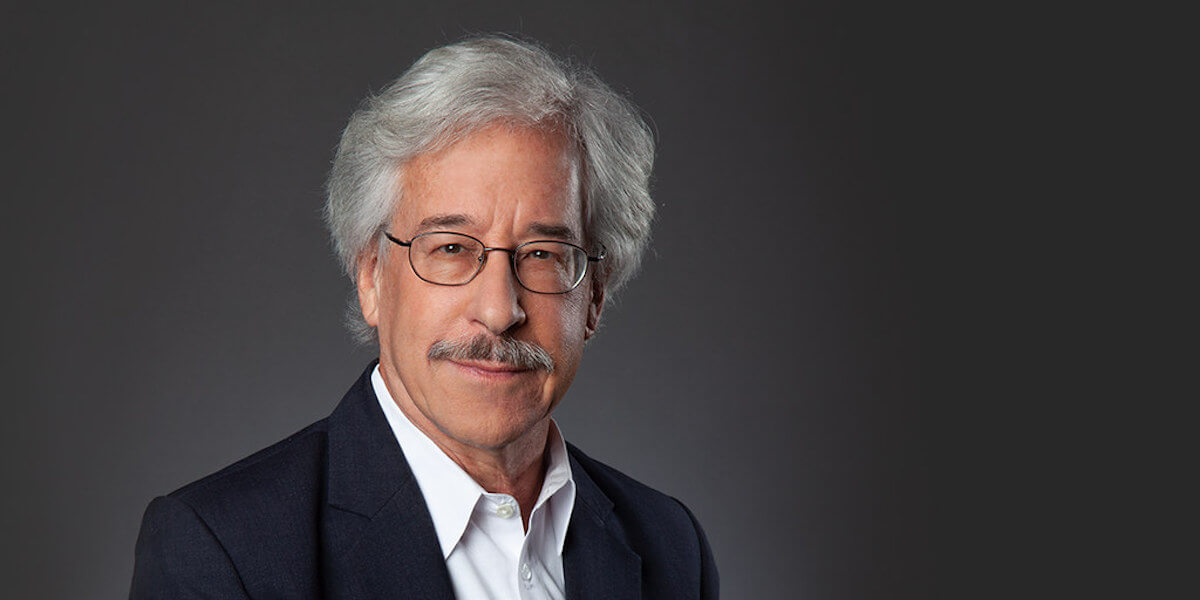
Gerald Loeb (Photo/Courtesy of Gerald Loeb)
To Gerald Loeb, the U.S. healthcare system is a wasteful mess that all too often fails patients.
Physicians, good intentions notwithstanding, sometimes misdiagnose medical conditions because they don’t recall them from their training or are unaware of current diagnostic tests to identify them. They also, critics allege, order too many costly diagnostic tests of marginal value, especially in the case of suspected rare diseases, to guard against malpractice lawsuits.
Loeb, a professor of biomedical engineering, pharmacy and neurology at the USC Viterbi School of Engineering, has developed an algorithm that he believes has the potential to dramatically improve healthcare and lower medical costs. The AI-fueled algorithm, he said, could mine electronic healthcare records in databases to suggest likely diagnoses and useful diagnostic tests. That could lead to faster and better treatments for patients.
“The algorithm works just like a doctor – thinking about what to do next at each stage of the medical work-up,” said Loeb, a pioneer in the field of neural prosthetics and one of the original developers of the cochlear implant, now widely used to treat hearing loss. “The difference is that it has the benefit of all the experiences in the collective healthcare records. This is a new form of artificial intelligence.”
Loeb’s groundbreaking research appears online in the “Journal of Biomedical Informatics.”
Leveraging AI
Conventional AI has long used a specific algorithm to suggest to physicians the most likely diagnoses given a set of observations. Called Bayesian Inference, it uses whatever information is currently available to suggest which diagnoses are the most likely.
Loeb’s algorithm reverses this process and instead seeks those test that would be most likely identify the correct illness or condition, no matter how obscure. He calls this Bayesian Exploration. The algorithm can also take into account the costs and delays associated with various diagnostic tests.
“This hasn’t been done before,” he said. “This is new.”
Loeb, a recently named fellow in the National Academy of Inventors, said his new algorithm has several benefits.
First, this algorithm could help doctors make better diagnostic and testing decisions by suggesting several good options, including ones a doctor might not have otherwise considered. Next, the diagnostic software would automatically update and improve as myriad physicians input additional data into electronic medical records.
In addition, doctors would more easily generate complete and accurate medical records. Instead of having to hunt for codes or work their way through myriad drop down menus, Loeb said, they could simply select a particular illness or screening suggested by the AI, which would automatically input the correct information into the electronic records.
Loeb emphasizes that physicians could ignore any AI-generated recommendations and go with their own judgment.
“The algorithm isn’t meant to make decisions for doctors or replace them,” Loeb said. “It’s meant to complement and support them.”
The algorithm in action
Loeb draws a contrast between the way physicians currently diagnose patients and order tests to how it could happen with the introduction of his algorithm.
In Loeb’s hypothetical example, a doctor sees a patient who complains of having had a mild headache for the past week. The patient does not have a fever or more specific neurological symptoms, so the most likely diagnosis is a stress headache. The physician prescribes Tylenol and asks the patient to report back in a week.
When the patient returns, he complains that his headache has worsened, making it less likely that tension caused it. Now, the physician must consider diagnoses like viral encephalitis and a brain tumor, which suggests diagnostic tests such as spinal tap and MRI scan. Such screenings have substantial costs and delays and may have risks of their own. Prioritizing them depends also on the likelihood of those diagnoses in similar patients. In the present system, the doctor does the best she can based on personal experience.
By contrast, Loeb’s algorithm would mine the collective electronic records of millions of patients with these and other diagnoses to figure out the most useful tests. The algorithm would compute the benefits-to-costs and display the recommended screenings on the physician’s laptop or tablet, as she filled out patient electronic medical records.
Ultimately, Loeb said, the doctor would rely on her own informed, subjective judgment, although she would now have access to meaningful information generated by his algorithm in deciding the best course to pursue. Recommendations would appear nearly instantaneously.
Looking to the future
So will Loeb’s algorithm revolutionize medical and testing diagnostics?
He believes it will one day. Still, the USC Viterbi and Keck School of Medicine professor acknowledges the huge financial and technological challenges of applying AI to electronic health records.
For instance, the United States’ balkanized medical system and spotty usage of electronic medical records largely make it an inhospitable environment for his technology to take root.
His system would be much easier to introduce in Scandinavia or South Korea, places with nationalized healthcare and the widespread usage of electronic medical records, he said. However, its implementation would face major challenges even there, including the large expense and brainpower needed to develop and deploy the massive database and user interfaces for the widespread adoption and integration of his algorithm.
Instead, Loeb puts his faith in the titans of tech. He believes that giants such as Amazon, Microsoft and Google have the resources and know-how to disrupt American healthcare the way Uber and Lyft upended the taxicab industry.
“If the promise of success is great enough, then people are going to be motivated to do it,” Loeb said. “And that’s what we think this algorithm provides: the possibility, the promise of offering a solution to a huge problem that wastes a lot of resources, trillions of dollars’ worth.”
Published on March 16th, 2021
Last updated on March 16th, 2021







